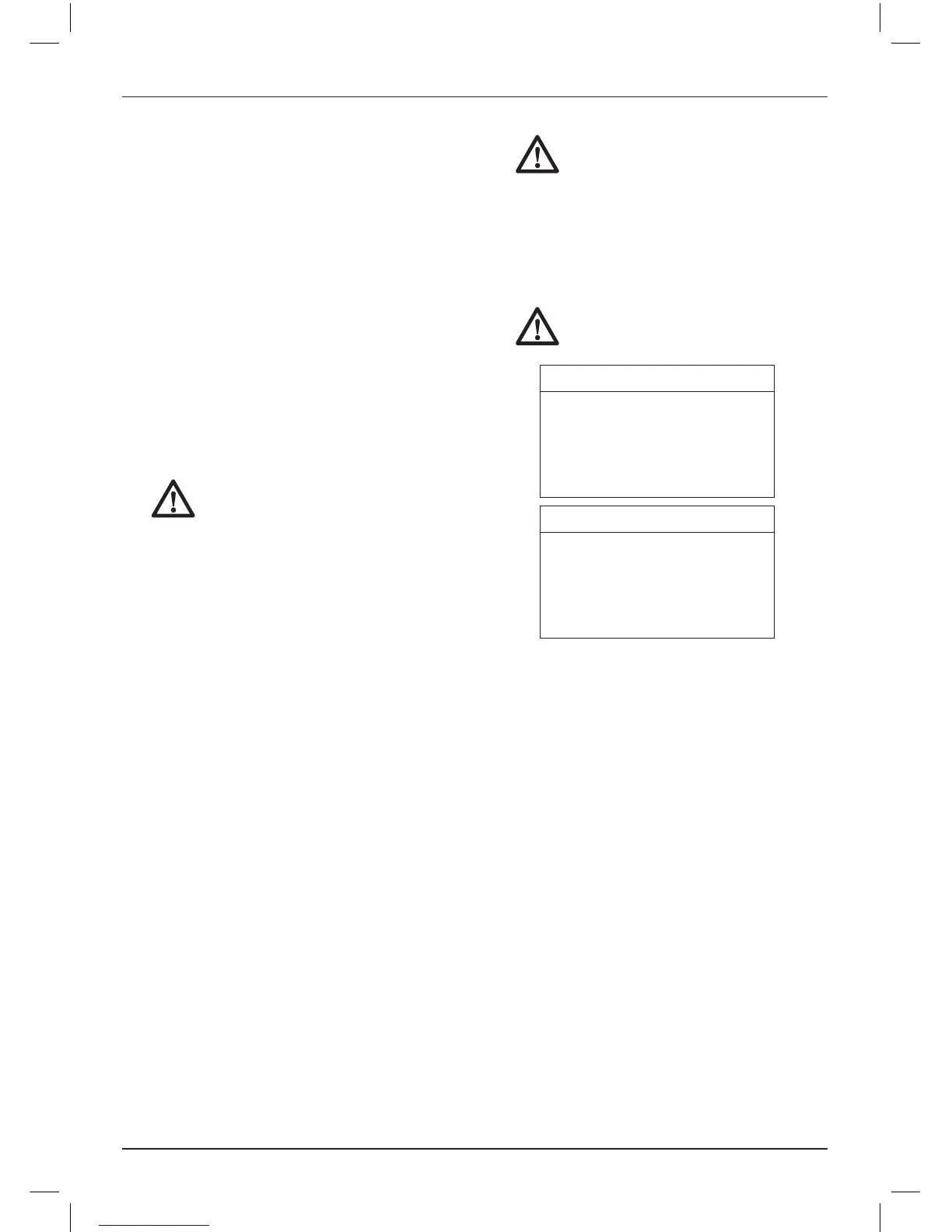22
English
BLADES
WARNING: To minimize the risk of eye
injury, always use eye protection. Carbide
is a hard but brittle material. Foreign
objects in the workpiece such as wire or
nails can cause tips to crack or break.
Only operate saw when proper saw
blade guard is in place. Mount blade
securely in proper rotation before using,
and always use a clean, sharp blade.
WARNING: Do not cut metal, plastic,
concrete, masonry or fiber cement
materials with this saw.
190 mm Diameter
Application Teeth
Fast rip 18
Rip 24
General Purpose 40
184 mm Diameter
Application Teeth
Rip 24
General Purpose 36
Finish 60
If you need assistance regarding blades, please
contact your local D
WALT dealer.
Kickback
Kickback is a sudden reaction to a pinched, bound
or misaligned saw blade, causing an uncontrolled
saw to lift up and out of the workpiece toward the
operator. When the blade is pinched or bound
tightly by the kerf closing down, the blade stalls
and the motor reaction drives the unit rapidly back
toward the operator. If the blade becomes twisted
or misaligned in the cut, the teeth at the back edge
of the blade can dig into the top surface of the
material causing the blade to climb out of the kerf
and jump back toward the operator.
Kickback is more likely to occur when any of the
following conditions exists.
1. IMPROPER WORKPIECE SUPPORT
A. Sagging or improper lifting of the cut off
piece can cause pinching of the blade and
lead to kickback (Fig. 24).
B. Cutting through material supported at the
outer ends only can cause kickback. As the
material weakens it sags, closing down the
kerf and pinching the blade (Fig. 24).
threads and must be turned counterclockwise
to loosen).
3. Remove the blade clamping screw (L) and outer
clamp washer (V). Remove old blade.
4. Clean any sawdust that may have accumulated
in the guard or clamp washer area and check
the condition and operation of the lower blade
guard as previously outlined. Do not lubricate
this area.
5. Select the proper blade for the application
(refer to Blades). Always use blades that are
the correct size (diameter) with the proper size
and shape center hole for mounting on the
saw spindle. Always assure that the maximum
recommended speed (rpm) on the saw blade
meets or exceeds the speed (rpm) of the saw.
6. Follow steps 1 through 5 under To Install the
Blade, making sure that the blade will rotate in
the proper direction.
LOWER BLADE GUARD
WARNING: The lower blade guard is
a safety feature that reduces the risk
of serious personal injury. Never use
the saw if the lower guard is missing,
damaged, misassembled or not working
properly. Do not rely on the lower
blade guard to protect you under all
circumstances. Your safety depends on
following all warnings and precautions
as well as proper operation of the
saw. Check the lower blade guard for
proper closing before each use. If the
lower blade guard is missing or not
working properly, have the saw serviced
before using. To assure product safety
and reliability, repair, maintenance and
adjustment should be performed by
an authorized service center or other
qualified service organization, always
using identical replacement parts.
CHECKING THE LOWER GUARD (FIG. 1)
1. Turn tool off and disconnect from power supply.
2. Rotate the lower guard lever (Fig. 1, M) from the
fully closed position to the fully open position.
3. Release the lever and observe the guard (K)
return to the fully closed position.
The tool should be serviced by a qualified service
center if it:
• fails to return to the fully closed position,
• moves intermittently or slowly, or
• contacts the blade or any part of the tool in all
angles and depth of cut.

